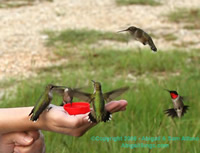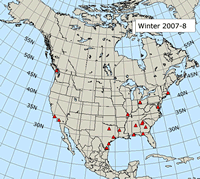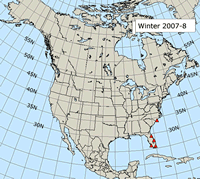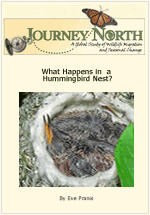Today's Report Includes:
- The
Migration: Highlights,
Maps, and
Questions
- Journal:
Nest Pictures
Tell a Story
- Slideshow:
Peek
into a Hummer Nest!
- Assessment:
What Have
We Learned?
- Year-end
Evaluation: Please
Share Your Thoughts!
Your Sightings! >>
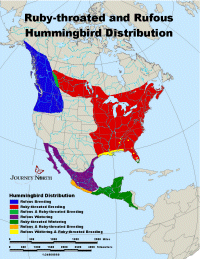 Distribution Map |
||
| Rufous
|
Ruby-throated
|
|
| Handouts:
Today's Hummingbird Map Questions Rufous Questions > Rubythroat Questions > |
||
|
Highlights:
Hummers by the Hundreds! |
What can you discover when you visit a Rufous nest stuffed with two nestlings? Use your observation skills, then write about what you see in your Hummingbird Journal!
A female hummingbird is about to lay eggs the size of jellybeans. You're invited to peek inside, welcome the nestlings into the world, and watch them grow for 22 days!
|
Teachers: The migration is wrapping up in the next few weeks! What
Have We Learned? |
Only with your help can we document Journey North's reach, impact, and value. The information you provide is critical for planning new initiatives and for improving Journey North. Thank you!
Year-end Evaluation >>
- JN for Kids Photo Studies: Stunning hummingbird photos and video clips along with observation questions >>
- Reading/Slides: What Happens in a Hummingbird Nest? >>
- Reading/Writing: Rubythroat Nesting Phenology >>
- Hummingbird Arrivals: Rubythroat Chart and Rufous Chart
- Assessment Tools: What Have We Learned About Hummingbirds? >>
- Tips: How to Help Hummingbirds and Their Habitat >>
- Video Clip: One Minute with a Hummingbird >>
- Children's Books We Like: It's a Hummingbird's Life >>
The Next Hummingbird Migration Update Will Be Posted on May 15, 2008.

